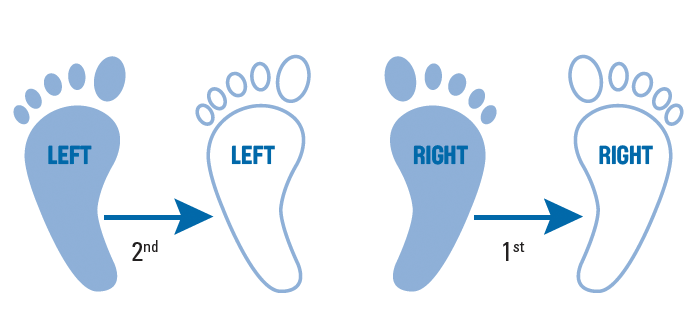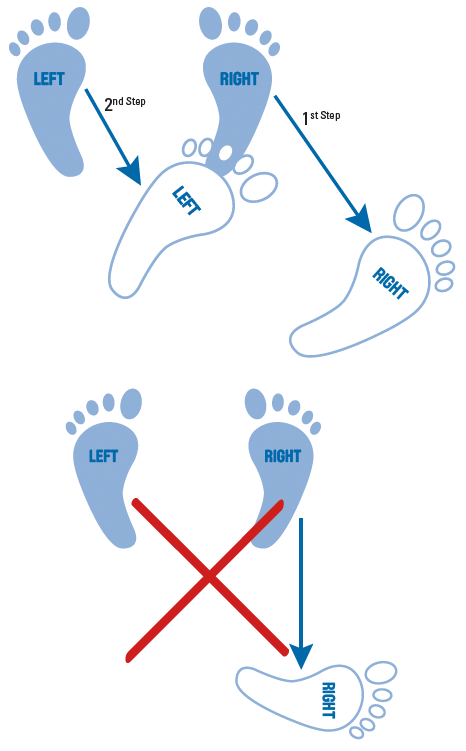- 2.1.1 Planning Practice - Introduction
- 2.1.2 Planning Practice - Setting goals
- 2.1.3 Planning Practice - Stages of a practice session
- 2.1.4 Planning Practice - Planning appropriate activities
- 2.1.5 Planning Practice - Duration of activities
- 2.1.6 Planning Practice - Using stations and group work
- 2.1.7 Planning Practice-Managing Physical and Psychological Load
- 2.1.8 Planning Practice-adding complexity
- 2.1.9 Review-Reflecting on practice
- 2.1.10 Creating a Positive Environment
- 2.1.11 Providing a Safe Environment
- Follow Up
- 2.3.1 Communicating with Athletes - Listen More, Speak Less
- 2.3.2 “Coaching on the Run” Technique
- 2.3.3 Providing Feedback
- 2.3.4 Changing behaviour with feedback
- 2.3.5 Conducting the Session - Organizing Players into Groups
- 2.3.6 Conducting the Session - Introduce the Activity
- 2.3.7 Conducting the Session - Observe and Give Feedback
- 2.3.8 Adaptive Coaching - Changing Activities to be more effective
- 2.3.9 Adaptive Coaching - Coaching Athletes of Varying Abilities
- 2.3.10 Adaptive Coaching - Including Athletes with a Disability
- Follow Up
- 3.2.1 Productive and reproductive approaches to coaching
- 3.2.2 Different approaches according to age of athlete
- 3.2.3 LTAD - making fun a focus
- 3.2.4 Games-based approach to coaching
- 3.2.5 Differing coaching styles to coaching
- 3.2.6 Communication styles
- 3.2.7 Holistic development - “athlete-centred” approach
- 3.2.8 Holistic development - teaching non-basketball skills
- 3.2.9 Holistic development - developing mindset and resilience
- 3.2.10 Holistic development - developing self confidence
- 3.2.11 Holistic development - developing self control
- Follow Up
- 2.7.1 Basic shooting - introduction
- 2.7.2 Basic shooting - teaching lay-up footwork
- 2.7.3 Basic shooting - foundation for the shot - balanced stance
- 2.7.4 Basic shooting - grip on the ball
- 2.7.5 Basic shooting - "top of the shot" - releasing the ball
- 2.7.6 Basic shooting - shooting off the dribble
- 2.7.7 Basic shooting - jump shot
- Follow up
- 2.8.1 The Importance of the First Step
- 2.8.2 Getting post position
- 2.8.3 Drop step
- 2.8.4 Drop step - counter move
- 2.8.5 Basics of perimeter offence
- 2.8.6 Drive fake moves
- 2.8.7 Shot fake moves
- 2.8.8 Catch and shoot
- 2.8.9 Penetrating off the dribble
- 2.8.10 Activities to practice offence in low post
- 2.8.11 Activities to practice perimeter offence
- Follow-Up
- 1.1.1 Matching up - basic principle of man to man defence
- 1.1.2 Distance from opponent
- 1.1.3 Defending one pass away
- 1.1.4 Flat triangle position
- 1.1.5 Stance - denial or open
- 1.1.6 Moving on the pass
- 1.1.7 Help defence - split line defence
- 1.1.8 Help defence - help to defend dribble penetration
- 1.1.9 Help defence - helping the helper / defensive rotation
- 1.1.10 Defensive communication
- 1.1.11 Transition defence
- 1.1.12 Full court man to man defence
- Follow up
- 1.2.1 Defending off ball screens – “lock and trail”
- 1.2.2 Defending off ball screens – “under”
- 1.2.3 Defending off ball screens – “through”
- 1.2.4 Defending off ball screens – “switch”
- 1.2.5 Defending on ball screens – “under”
- 1.2.6 Defending on ball screens – “over”
- 1.2.7 Defending on ball screens – “through”
- 1.2.8 Defending off ball screens – “switch”
- 1.2.9 Defending on ball screens – “double”
- Follow up
- 2.1.1. Motion offence - 5 out - dribble entry - hand-off
- 2.1.2 Motion Offence - 5 Out - Replacing the Cutter
- 2.1.3 Motion Offence - 5 Out - Purposeful movement - timing and spacing
- 2.1.4 Motion Offence - 5 Out - Ball Reversal
- 2.1.5 Motion Offence - 5 Out - Dribble Penetration - Receivers’ Principles
- 2.1.6 Motion Offence - 5 Out - Dribble Entry
- 2.1.7 Introducing Screens - 5 Out - Pass and Screen Away
- 2.1.8 Scrimmage Activity
- 2.1.9 Allowing Creativity in Decision Making
- Follow up
- 2.2.1 Off Ball Screens - Role of Screener - Setting the Screen
- 2.2.2 Off Ball Screens - Basic Cuts of Screen - Straight Cut
- 2.2.3 Off Ball Screens - Basic Cuts of Screen - Curl Cut
- 2.2.4 Off Ball Screens - Basic Cuts of Screen - Back Cut
- 2.2.5 Off Ball Screens - Basic Cuts of Screen - Flare Cut
- 2.2.6 Off Ball Screens - Role of Screener – Pop or Roll
- 2.2.7 Off Ball Screens - Down screens
- 2.2.8 Off Ball Screens - Up screens
- 2.2.9 Off Ball Screens - Back screens
- 2.2.10 On Ball Screens - Dribbler Options
- Follow up
- 2.3.1 Basic Fast Break - Starting the Break
- 2.3.2 Basic Fast Break - Running Wide Lanes
- 2.3.3 Basic Fast Break - Pass the Ball Ahead
- 2.3.4 Basic Fast Break - 2v1 Fast Break
- 2.3.5 Basic Fast Break - 3v2 Fast Break
- 2.3.6 Basic Fast Break - Moving into Offence
- 2.3.7 Activities to Practice Fast Break Principles
- Follow up
Level 1
1.1.1 Basic defensive footwork
The key fundamental skills are:
- Balanced Stance
- Lateral Movement ("big to bigger")
- Changing Direction
- Transition from lateral movement to sprint.
Balanced Stance
In basketball the same basic stance is used in offence and defence. The key is that the feet should be approximately shoulder-width apart, with knees bent. The back should be slightly bent forward, but keeping the “nose behind the toes”.
In defence, the hand position varies depending upon the situation.
Lateral Movement ("Big to Bigger")
When moving laterally to guard someone with the ball, players should be taught to use “big to bigger” footwork, sometimes called a “defensive slide”. The premise is simple – when moving to your right, step with the right foot first. The second step brings you back to a balanced stance.
Once a defender establishes a legal guarding position, they can move laterally to maintain it. Further, if there is contact with the defender’s torso (even if the defender is moving) it is considered that the defender was in position first.13
Changing Direction
To change direction, the player performs a reverse pivot (also called a “drop step”) with the foot of the direction that they are moving. The second foot returns to a balanced stance. It is important that the step is to an angle, keeping the defender’s torso pointing at the offensive player.
A common mistake that players make is that their first step goes behind them, which turns them sideways to the offensive player. Once the defender does this, the offence will easily get past them.
Transition from Lateral Movement to Sprinting
Lateral defensive footwork is slower than running – it is used for the specific purpose of legally blocking the dribbler and trying to take a charge.
However there comes a time when the defender will need to run in order to keep up with the offensive player. The transition to running is easier.
Again, step with the foot of the direction you are moving, turning the foot to point in that direction.
The second step, rather than just returning to a balanced stance, is long and explosive as the player moves into a sprint.
Young players should practice each type of footwork regularly. Many activities in training that have an offensive purpose can also include defence – giving an opportunity to practice footwork without requiring any more time in the practice session.



